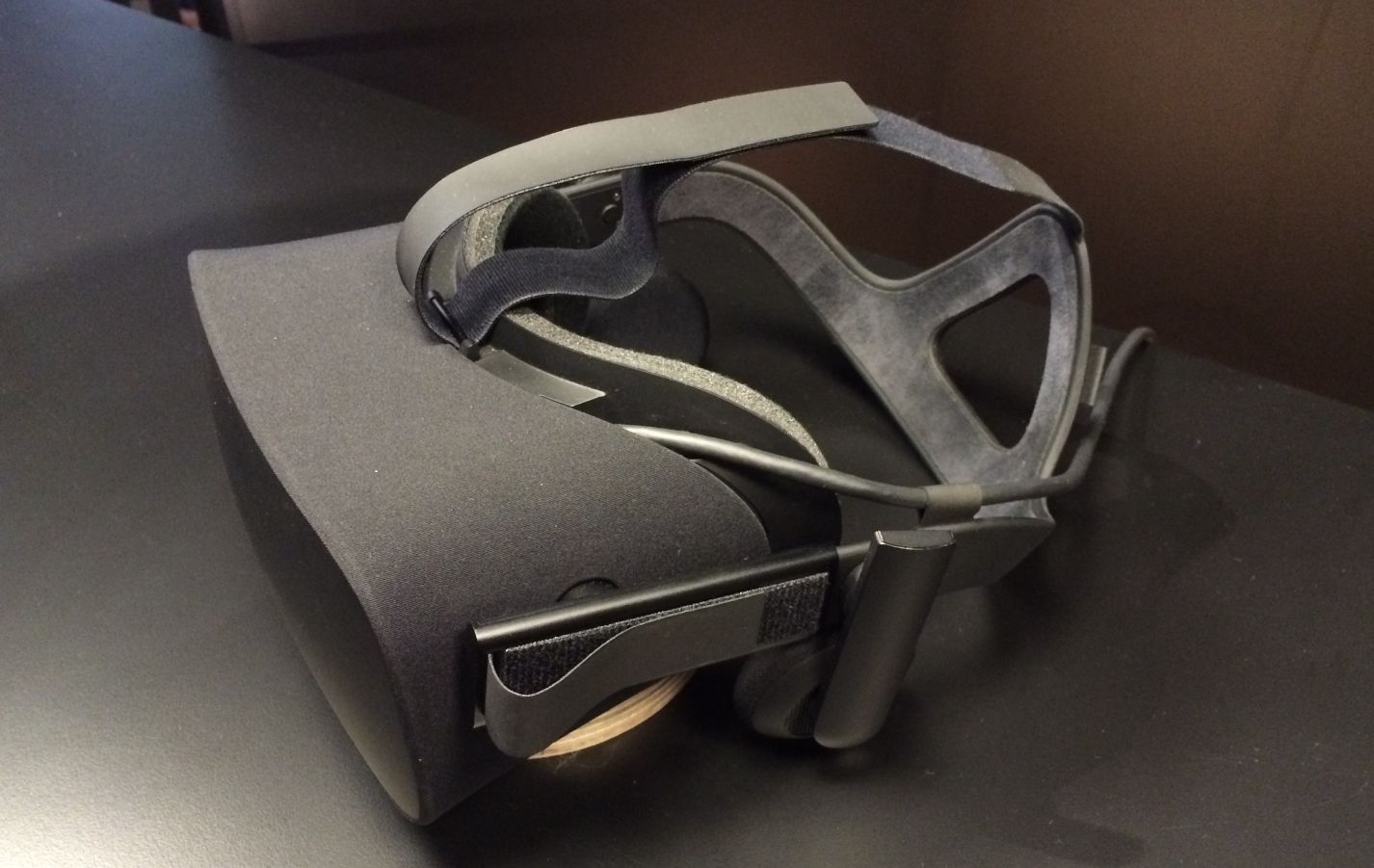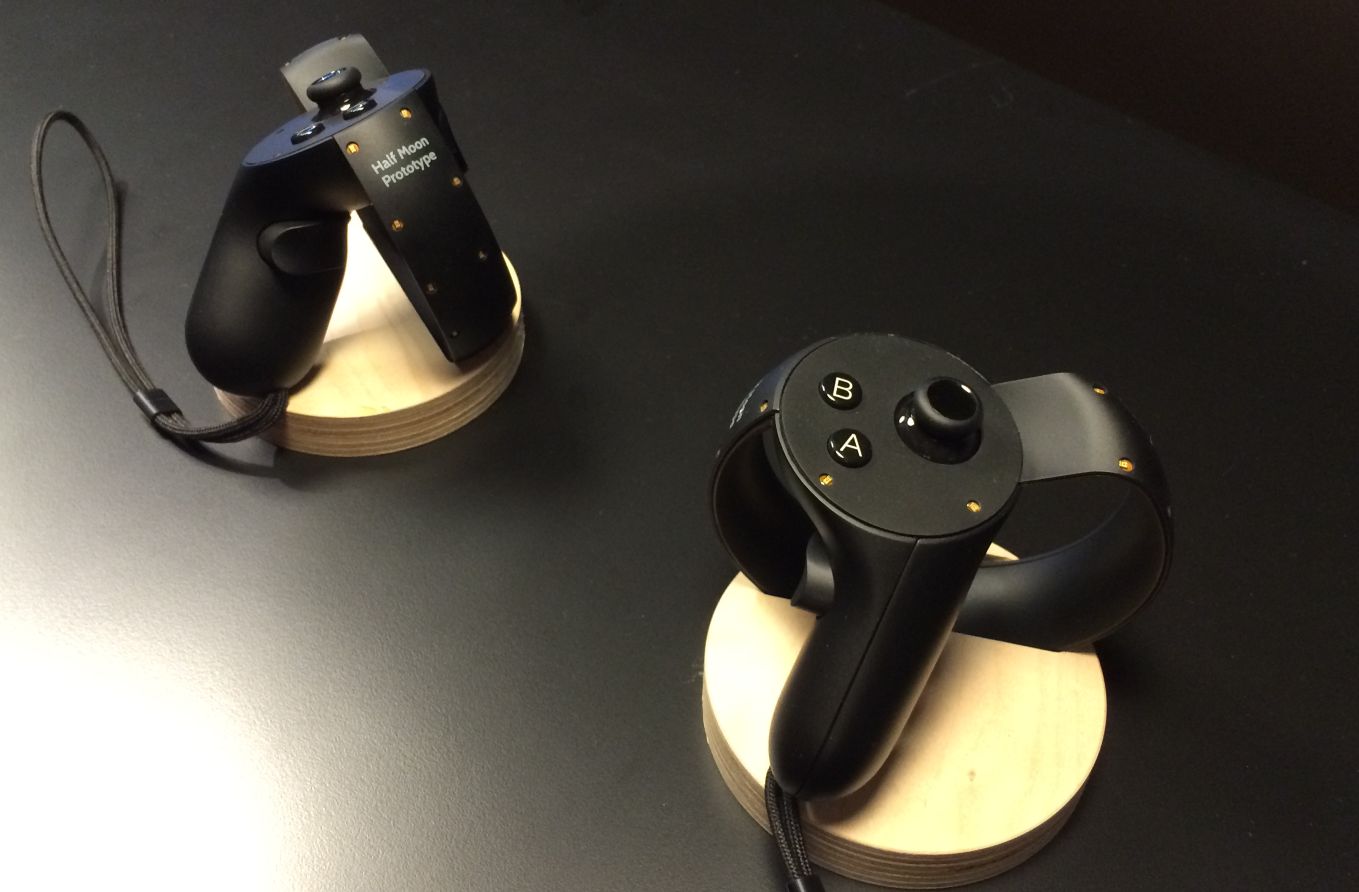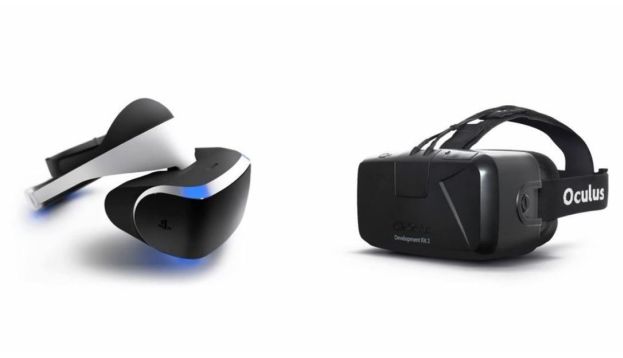E3 2015 will be recognized as the point at which virtual reality (VR) and augmented reality (AR) became real for the industry. Sure, we still have a lack of solid ship dates and prices, and all of the major players seem to be aiming past the holidays. Yet look how far VR has come — the technology is working, consumer hardware is being shown, there are many VR games and other applications well under way. How real is VR getting? Check out the fairly significant expo floor area devoted to it. Oculus, Project Morpheus, and a host of smaller players are taking up an amount of room equal to one of the major players in the business, especially if you count the space devoted to VR in various publishers’ booths. VR and AR are coming to market.
 Oculus Rift consumer edition
Oculus Rift consumer edition
Yet there are major parts of VR and AR that have yet to be worked out. It’s clear that VR content will be digitally distributed, but by whom? What will be the cost of selling content on those platforms, and indeed what will be the pricing for VR content? Will free-to-play have any place? How will VR content be marketed? Who will be the audience?
Right now answers are in short supply, but we can start to see how the questions are being addressed. First, let’s look at the hardware. The Oculus Rift is refined and getting ready for its debut, and though we don’t know the price, we know that a basic system will cost around $1500 for a mimum PC and the Rift headset. Given the pricing of the hardware that Oculus specc’ed out, that’s around a $500 price point for the Rift — and essentially no current laptop will be able to drive it, though doubtless we’ll see some by the time the Rift ships next year.
 Oculus Rift touch controllers
Oculus Rift touch controllers
Just from what’s been shown, it seems likely that the HTC/Valve Vive system will probably be even more expensive, and it wouldn’t be surprising if Microsoft’s HoloLens and Sony’s Project Morpheus were all in the same range of $400 to $700. Essentially it looks like the first round of VR and AR hardware from the big companies will be more for early adopters, the hardcore technology and gaming fans who want the very latest.
There is, however, a growing array of lower-cost options for VR. Google’s Cardboard is only $20, and you can even make your own version for less. The Samsung Gear VR system is $200, but you have to have a compatible Samsung device (or purchase one). New entrants like MergeVR are offering a more reasonable pricing level of $129 and work with any smartphone, which will allow a wider audience to experience VR.
VR content was all around the E3 show, and it’s looking pretty good. The Assembly from nDreams is coming on Rift and Project Morpheus, and it’s an interesting adventure that unfolds as you experience its immersive setting of a secretive laboratory complex with sinister motivations. Talking to those and other developers, though, there’s no consensus on the length of VR experiences nor on the pricing. “We’re all experimenting,” said one developer. “No one knows what the right answers are.”
We know that Oculus will have its own VR app store, and so will Valve as part of Steam, though the terms and conditions aren’t yet specified. VR systems that use smartphones at their core, such as the Gear VR, MergeVR and Google Cardboard, will be using the Google Play store and Apple’s App Store (Google now supports iOS with Google Cardboard, too). It’s likely the new VR-specific app stores will take a 30 percent cut, similar to current mobile app stores.
Clearly, developers are expecting VR apps to be premium priced. “Free-to-play only makes sense when there’s a huge installed base, and we won’t have that for a while,” said one developer. As to what the premium price might be, that’s not clear yet. Probably smartphone-based VR apps will be in the $2 to $7 range, but it’s quite reasonable to think that longer VR apps for expensive VR systems will be more similar to current console game pricing than mobile game pricing. We’ll probably see a big range of prices initially, and consumer response will determine which price points end up as standards.
 nDreams’s The Assembly
nDreams’s The Assembly
When it comes to marketing VR and AR applications, the field faces a distinct problem: You can’t effectively show VR on an ordinary screen. The experience is something that you have to try for yourself, as depictions and descriptions in other media fall short. Marketers are going to need to get creative in order to reel in customers. There’s plenty of interest in the technology, but that’s a far cry from making a purchase, especially when that purchase will be in the hundreds of dollars.
Marketers will be using influencers to help convince people that this technology is indeed worthwhile, and worth trying out. Perhaps simple, inexpensive VR devices like Google Cardboard may be used to provide a taste of VR, but the challenge will be to explain how your $500 device is that much better than the $20 device… or, perhaps, that the experiences aren’t really comparable to any great degree.
Finding a way to give people an experience with your VR hardware is clearly the best sales tools, and we’ve already seen how companies are working to make this happen. Oculus is moving people through its E3 booth as best it can, but there are always long lines. Will there be kiosks in retail stores Demos at conventions and public gatherings There’s going to be plenty of experimentation when it comes to marketing.
One thing is clear, though. VR and AR have had billions of dollars spent already by companies like Facebook, Google, Sony, Microsoft, and Samsung to bring the hardware to market. These companies aren’t going to let the hardware investment go to waste by stinting on the marketing budgets. When these devices start becoming available to consumers, there will be some massive marketing expenditures to drive adoption and outpace the competition.

